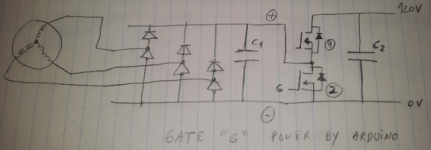h0tr0d
1 kW
- Joined
- Apr 28, 2012
- Messages
- 460
Hey guys!
I would like to make a generator out of a brushless motor for my ebike (chainless transmission)
I need:
- Constant voltage to charge the battery @ 120V, independent of rpm
- a control knob to vary the the torque on the pedals (current control?)
- 100W constant, 500W peak
I have a C80-100, thinking in winding it with 15 turn 14awg (already have both) giving a kv of 40 plus a 4.5:1 reduction (540rpm max generator, ~13.5v)
There are some threads here about generator but constant voltage I haven't seen...
Help out Please!!
Edit: some numbers.
I would like to make a generator out of a brushless motor for my ebike (chainless transmission)
I need:
- Constant voltage to charge the battery @ 120V, independent of rpm
- a control knob to vary the the torque on the pedals (current control?)
- 100W constant, 500W peak
I have a C80-100, thinking in winding it with 15 turn 14awg (already have both) giving a kv of 40 plus a 4.5:1 reduction (540rpm max generator, ~13.5v)
There are some threads here about generator but constant voltage I haven't seen...
Help out Please!!
Edit: some numbers.


